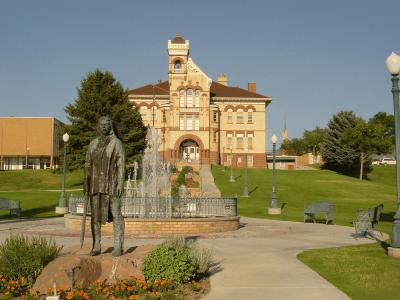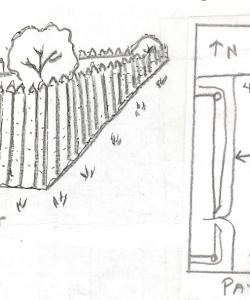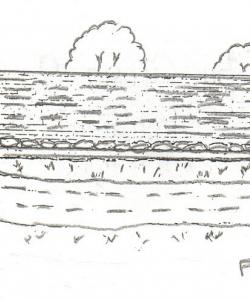Historical Walking Tour
Walking Tour of Old Fort Peteetneet Old Fort Payson
and Historic Payson
Payson Historical Society
Compiled by Gloria S. Barnett and L. Dee Stevenson ©2006
Early Payson History
Payson was founded on October 20, 1850 when three wagons entered the current site of Payson. The families consisted of: James Pace, their leader, Andrew Jackson Stewart, and John Courtland Searles. Other families that arrived in November were: James Daniels, George and Joseph Curtis, William C. Patten and Elias Gardner. In December, and shortly after, families joining the group were: Charles B. Hancock, Benjamin F. Stewart, James McClellan, Henry E. Stevens, James McFate, John Bellows, Breed Searle, and Benjamin Cross. The town was named Peteetneet after a Ute leader who lived in the area. A small fort was built to house the sixteen families in 1851. The fort was made of logs taken from the banks of the nearby creek they also named Peteetneet Creek. The logs were lashed so tightly together that a dog could not squeeze through.
In 1853 Indian uprisings made it necessary to enlarge the fort to accommodate the families that had moved into the new settlement. The fort had a four-foot deep moat at the bottom, a base of rocks and an eight-foot wall of adobe with bastions on the corners. It was about four city blocks square. The main gate was on the east side. The name of the settlement was changed to Payson in the latter part of 1851. Brigham Young changed the name to honor James Paces, its founder.
Payson City Historical Walking Tour
The Payson Historical Preservation Board recently erected new markers at important points along the walking tour. Each marker has a new plaque that gives information about the particular site. The markers were constructed to remind us of our pioneer heritage. They are an important contribution to the historical walking tour.
ACKNOWLEDGMENT OF SUPPORT The activity that is the subject of this Walking Tour has been financed in part with Federal funds from the National Park Service, U.S. Department of the Interior, and administered by the State Historic Preservation Office of Utah. The contents and opinions do not necessarily reflect the views or policies of the Department of the Interior or the Utah State Historic Preservation Office, nor does the mention of trade names or commercial products constitute endorsement or recommendation by the Department of the Interior or the Utah State Historic Preservation Office.
NONDISCRIMINATION STATEMENT This program receives Federal financial assistance for identification and Information and Education ($20,000.00): The CLG will complete several public education activities such as historic walking tour brochure or app and information videos about the preservation of Peteetneet School. 1 Page 1 of 2 Federal Award Identification Number: P22AF01179 Sub-Recipient Name: Payson City Sub-Recipient DUNS #: 073120172 Federal Awarding Agency: National Park Service Pass-through Entity: UT SHPO CFDA #: 15.904 CFDA Title: Historic Preservation Fund protection of historic properties. Under Title VI of the Civil Rights Act of 1964, Section 504 of the Rehabilitation Act of 1973, and the Age Discrimination Act of 1975, as amended, the U.S. Department of the Interior prohibits discrimination on the basis of race, color, national origin, disability or age in its federally assisted programs. If you believe you have been discriminated against in any program, activity, or facility as described above, or if you desire further information, please write to: Office for Equal Opportunity, National Park Service, 1849 C Street NW, Washington, D.C. 20240.



